478. When the creator of the C text
decided to put a Moon calendar half a year away from
its beginning, where the Full Moon was at The Navel
of the Horse, it may have been to suggest the
nakshatra method for finding the current date in the
Sun calendar.
...
In
each of the Nakshatras there is a 'yoga',
a key star that marks a station taken by the
moon in its monthly (twenty-seven- or
twenty-eight-day course) through the stars. (The
sidereal period of the moon, twenty-seven days
and a fraction , should be distinguished from
the synodic, or phase-shift period of 29.5 days,
which is the ultimate antecedent of our month.)
In ancient times the priest-astronomers
(Brahmans) determined the recurrence of the
solstices and equinoxes by the use of the
gnomon. Later they developed the Nakshatra
system of star reference to determine the
recurrence of the seasons, much as the Greeks
used the heliacal rising of some star for the
same purpose.
An
example of the operation of the Nakshatra
system in antiquity can be seen in figure 6.9
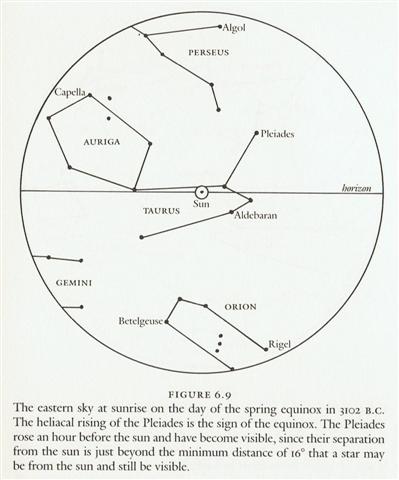
Here
we see that the spring equinox occurred when the
sun was at its closest approach to the star
Aldebaran (called Rohini by the Hindus)
in our constellation Taurus. But, of course, the
phenomenon would not have been visible because
the star is too close to the sun for
observation. The astronomers would have known,
however, that the equinoctial point was at
Aldebaran by observing the full moon falling
near the expected date or near a point in the
sky exactly opposite Aldebaran (since the full
moon is 180º from the sun), that is, near the
star Antares ...
Although the Moon calendar presumably was used
anew each month there was only one month when the
Full Moon face coincided with September 28, viz. at the
time when the
Sun was at Porrima as a sign for the final of the
northern summer half of the year - which could be
deduced from looking at the Breast of Cassiopeia as
a sign for the people on Easter Island that a new year
had been born:
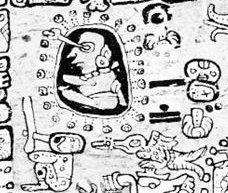
... In the
morning of the world, there was nothing but water.
The Loon was calling, and the old man who at that
time bore the Raven's name, Nangkilstlas,
asked her why. 'The gods are homeless', the Loon
replied. 'I'll see to it', said the old man, without
moving from the fire in his house on the floor of
the sea. Then as the old man continued to lie by his
fire, the Raven flew over the sea. The clouds broke.
He flew upward, drove his beak into the sky and
scrambled over the rim to the upper world. There he
discovered a town, and in one of the houses a woman
had just given birth.
The Raven
stole the skin and form of the newborn child. Then
he began to cry for solid food, but he was offered
only mother's milk ...
|
te kava - erua marama |
e marama noho i tona
nohoga |
te hare pure e tagata
noho ki roto |
|
Hare.
House, family,
home. Vanaga. House, cabin, habitation,
building, hut, structure; hare iti,
hut; hare itiiti no,
cabin; hare kahu, tent; hare
neinei, latrine; hare no iti,
cell; hare nunui, palace; hare
pohurihuri, prison; hare pure,
chapel, church; ki te hare, at
home. Harepepe, kelp. Harepiko,
a. asylum, place of refuge; b. ambush,
snare. Harepopo, shed.
Harepopokai, storehouse. Churchill.
Pure. Cowrie (Cypraea
caput draconis); pure vaka,
another type of cowrie, which can float
on the sea like a diminutive boat (vaka).
Vanaga. 1. To pray, to supplicate,
invocation, prayer; hare pure,
church, chapel; tae pure,
irreverence; purega, prayer P
Pau., Mgv., Mq., Ta.: pure, to
pray. In Samoa, Tonga, Niuē,
Futuna, Uvea, pule
means to command. 2. A shell T. P
Pau.: hakapurepure, to dye, to
color. Mq.: pué, the porcelain
shell. Ta.: pure, a mark.
Purepure, spotted, dappled; ragi
purepure, dappled sky. Purepurea,
spotted. P Pau.: hakapurepure, to
dye, to color. Mgv.: purepure,
printed cloth; akapurepure, to
paint in different colors. Mq.:
puépué, covered with pale scars.
Ta.: purepure, spotted, dappled.
Churchill.
Pureva,
rock, stone (small enough to be thrown
by hand). Vanaga.
Pureva,
to throw a stone. Ta.:
Pureva,
to be on the eve of going. Ha.:
puleva,
to float here and there. Churchill.
Pau.: Pure-hiva, a butterfly.
Mgv.: pure-rehue, id. Ta.:
pure-hua, a moth. Mq.: pure-hua,
id. Ma.: pure-hua, id. Churchill. |
 |
 |
 |
 |
|
Maúre
Ca7-21 |
Ina-ira
Ca7-22 → π |
Rakau
Ca7-23 → 216 = 3 / 5 * 365 |
Omotohi
Ca7-24 (192) |
|
Sept 26 |
27 (270) |
28 |
29 (2 * 136) |
|
CLOSE TO THE FULL MOON: |
|
γ
Muscae (189.0),
AVIS SATYRA (Bird of the
Satyrs) =
η
Corvi
(189.3),
ASTERION (Starry) =
β
Canum Ven.
(189.5),
KRAZ = β Corvi,
κ Draconis (189.7) |
α Muscae (190.2), τ Centauri (190.5), χ
Virginis (190.7)
ALDERAMIN (α
Cephei)
|
Al Áwwā'-11 (The Barker) /
Shur-mahrū-shirū-18 (Front or West Shur)
Sombrero Galaxy = M104 Virginis
(191.1),
ρ
Virginis (191.4),
PORRIMA =
γ
Virginis,
γ
Centauri (191.5)
*150.0 = *191.4 - *41.4 |
ι Crucis (192.2), β Muscae (192.5),
MIMOSA = β Crucis
(192.9) |
|
... The Sensitive plant (Mimosa
pudica L.) is a creeping annual or
perennial herb often grown for its
curiosity value: the compound leaves
fold inward and droop when touched,
re-opening within minutes. Mimosa
pudica is native to Brazil, but is
now a pantropical weed. Other names
given to this curious plant are Humble
plant, TickleMe plant, Shame plant,
Sleeping Grass, Prayer plant,
Touch-me-not, Makahiya
(Philippines, meaning 'shy'), Mori
Vivi (West Indies), mate-loi
(false death) (Tonga) ... In the evening
the leaflets will fold together and the
whole leaf droops downward. It then
re-opens at sunrise
...
Rau
hei.
1. Branch of mimosa. 2. Killed enemy. 3.
Hanged 'fish'. 'Branche
du mimosa (signe de mort), ennemie túe
(poisson suspendu)' according
to Jaussen. Barthel. |
|
CLOSE TO THE SUN: |
|
λ Phoenicis (6.3), β Tucanae (6.4)
45.0 = 86.4 - 41.4 |
ANDROMEDA GALAXY (M31),
π Andromedae (7.7) |
ε Andromedae (8.2),
DELTA = δ Andromedae
(8.4),
SCHEDIR (Breast) = α
Cassiopeiae
(8.6), ζ Andromedae, μ Phoenicis (8.9)
*333 = *150 + *183 |
ξ
Phoenicis (9.0),
ρ
Tucanae (9.1),
DENEB KAITOS (Tail of the Sea Beast) = β
Ceti,
η
Phoenicis (9.4),
AL NITHĀM (String of Pearls) =
φ¹
Ceti
(9.6)
*334 = *375.4 - *41.4 |
The end of the northern summer seems
accordingly to have coincided with the first day
after day 270 (= 9 * 30 = 15 * 18 = 5 * 54 = 3 *
90), suggesting a regular year with 360 days (equal
to the number of degrees in a circle).
Counting from the beak of the 'fish
bird' clockwise to where the eye of the Mayan
astronomer seizes (haru) one of the 24
leading stars - as we can see in the picture above -
there are 9 hours.
But 5 * 30 = 15 * 10 = 3 * 50 = 150 =
300 / 2 was the right ascension distance from
Bharani to Porrima, suggesting a regular year with only 10
months:
|
Delta (→ 4) |
δ Andromedae |
8.4 |
March 29 (88) |
0 |
|
|
Eta (→ 7)
|
η Phoenicis |
9.4 |
March 30 |
1 |
|
|
η Andromedae |
11.4 |
April 1 (91) |
3 |
|
|
Gamma (→ 3) |
Cih (Whip) (γ Cassiopeiai) |
12.4 |
April 2 (92) |
4 |
|
|
1 |
Al Sharatain |
Pair of Signs |
β Arietis (Sheratan),
γ (Mesarthim) |
27.4 |
April 17 (107) |
19 |
|
|
Musca Borealis |
35 (Head of the Fly), 39
(Kaffaljidhma), and
41 Arietis (Bharani) |
41.4 |
May 1 (121) |
33 |
0 |
|
2 |
Al Dabarān |
Follower |
α Tauri (Aldebaran), θ¹, θ²´,
γ (Hyadum I),
δ (Hyadum II), ε (Ain) |
63.4 |
May 23 (143) |
55 |
22 |
|
3 |
Al Hak'ah |
White Spot |
λ
Orionis (Heka),
φ¹,
φ² |
83.4 |
June 12 (163) |
75 |
42 |
|
4 |
Al Han'ah |
Brand |
γ Gemini (Alhena), μ (Tejat
Posterior), ν,
η (Tejat Prior),
ξ (Alzirr) |
93.4 |
June 22 (173) |
85 |
52 |
|
5 |
Al Dhirā' |
Forearm |
α Gemini (Castor),
β (Pollux) |
113.4 |
July 12 (193) |
105 |
72 |
|
6 |
Al Nathrah |
Gap |
ε Cancri (Beehive) |
130.4 |
July 29 (210) |
123 |
90 |
|
7 |
Al Tarf |
End |
ξ
Cancri,
λ
Leonis (Alterf) |
143.4 |
Aug 11 (223) |
135 |
102 |
|
8 |
Al Jabhah |
Forehead |
η Leonis (Al Jabhah),
α (Regulus), ζ (Adhafera), γ
(Algieba) |
152.4 |
Aug 20 (232) |
144 |
111 |
|
9 |
Al Zubrah |
Mane |
δ
Leonis (Zosma),
θ
(Coxa) |
169.4 |
Sept 6 (249) |
161 |
128 |
|
10 |
Al Sarfah |
Turn |
β Leonis (Denebola) |
178.3 |
Sept 15 (258) |
170 |
137 |
|
11 |
Al Áwwā' |
Barker |
β (Alaraph), η (Zaniah),
γ (Porrima),
δ (Minelauva), ε Virginis
(Vindemiatrix) |
191.5 |
Sept 28 (271) |
183 |
150 |
... From the natives of South Island [of New
Zealand] White [John] heard a quaint myth
which concerns the calendar and its bearing
on the sweet potato crop. Whare-patari,
who is credited with introducing the year of
twelve months into New Zealand, had a staff
with twelve notches on it. He went on a
visit to some people called Rua-roa
(Long pit) who were famous round about for
their extensive knowledge. They inquired of
Whare how many months the year had
according to his reckoning. He showed them
the staff with its twelve notches, one for
each month. They replied: 'We are in error
since we have but ten months. Are we wrong
in lifting our crop of kumara (sweet
potato) in the eighth month?'
Whare-patari answered: 'You are wrong.
Leave them until the tenth month. Know you
not that there are two odd feathers in a
bird's tail? Likewise there are two odd
months in the year.' The grateful tribe of
Rua-roa
adopted Whare's advice and found the
sweet potato crop greatly improved as the
result. We are not told what new ideas he
acquired from these people of great learning
in exchange for his valuable advice. The
Maori further accounted for the twelve
months by calling attention to the fact that
there are twelve feathers in the tail of the
huia bird and twelve in the choker or
bunch of white feathers which adorns the
neck of the parson bird
...
The ancient Egyptians knew
the year was longer then 360 days and they
had a myth which explained why:
... Nut, whom the Greeks sometimes
identified with Rhea, was goddess of the
sky, but it was debatable if in historical
times she was the object of a genuine cult.
She was Geb's twin sister and, it was said,
married him secretly and against the will of
Ra. Angered, Ra had the couple brutally
separated by Shu and afterwards decreed that
Nut could not bear a child in any given
month of any year. Thoth, Plutarch tells us,
happily had pity on her. Playing draughts
with the Moon, he won in the course of
several games a seventy-second part of the
Moon's light with which he composed five new
days. As these five intercalated days did
not belong to the official Egyptian calendar
of three hundred and sixty days, Nut was
thus able to give birth successively to five
children: Osiris, Haroeris (Horus), Set,
Isis and Nepthys
...

After the end of their regular
year with 360 days there followed 5 extra
days before the next regular cycle began.
The regular sequence of
glyphs in the C text could similarly have
originated from 6 extra days, not 5 because
the year was slightly longer than 365 days.
Counting from the exceptional
Ca1-6 and 180 days (glyphs) ahead will bring
us from September 26 to glyph number 186, to
the night when the Full Moon (ideally) was
at the Long Sand-bank (15 * 15 = 225 days
after 0h at the time of Bharani):
|
no glyph |
koia |
ki te hoea |
ki te
henua |
te rima te
hau tea |
haga i te
mea ke |
ki te
henua - tagata honui |
|
Hoe.
Hoe
1. Paddle. Mgv.: hoe,
ohe, id. Mq., Ta.:
hoe, id. 2. To wheeze
with fatigue (oeoe
2). Arero oeoe, to
stammer, to stutter; Mgv.
oe, to make a whistling
sound in breathing; ohe,
a cry from a person out of
breath. Mq.: oe, to
wheeze with fatigue. 3.
Blade, knife; hoe
hakaiu, clasp-knife,
jack-knife; hoe hakanemu,
clasp-knife; hoe pikopiko,
pruning knife. 4. Ta.:
oheohe, a plant. Ma.:
kohekohe, id.
Churchill.T. Paddle. E
hoe te heiva = 'and to
paddle (was their)
pleasure'. Henry. Hoea,
instrument for tattooing.
Barthel. |
 |
 |
 |
 |
 |
 |
|
Ca1-1 |
Ca1-2 |
Ca1-3 |
Ca1-4 |
Ca1-5 |
Ca1-6 |
|
CLOSE TO THE FULL MOON: |
|
March 21 (80)
Al Fargh al Thāni-25 (Rear
Spout)
0h (365.25)
CAPH (Hand) =
β
Cassiopeiae,
SIRRAH (Navel of the Horse)
=
α
Andromedae
(0.5),
ε
Phoenicis,
γ³
Oct.
(0.8) |
22
Uttara Bhādrapadā-27 (2nd of
the Blessed Feet) /
Wall-14 (Porcupine)
ο Oct. (1.3),
ALGENIB PEGASI = γ Pegasi
(1.8) |
23
χ Pegasi (2.1), θ Andromedae
(2.7) |
24
σ Andromedae (3.0), ι Ceti
(3.3), ζ Tucanae (3.5), ρ
Andromedae, π Tucanae (3.7) |
Julian equinox
no star listed (4) |
26 (85 = 185 - 100)
ANKAA = α Phoenicis,
κ Phoenicis (5.0)
ALPHARD (α Hydrae)
|
27
λ Phoenicis (6.3), β Tucanae
(6.4)
45.0 = 86.4 - 41.4 |
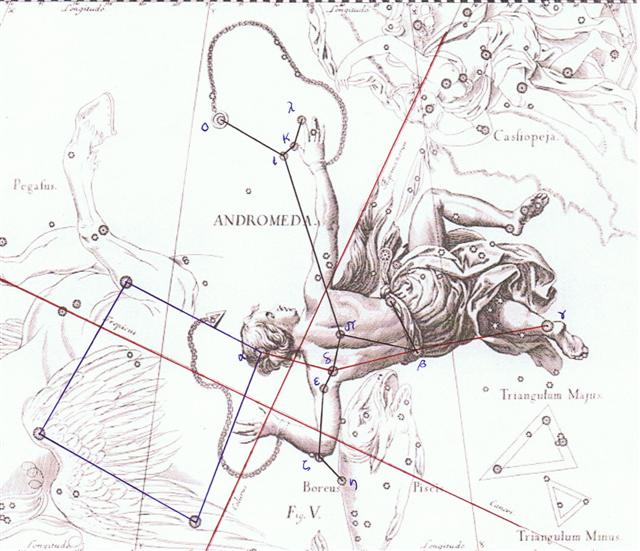 |
|
CLOSE TO THE SUN: |
|
Sept 20 (263) |
21 |
Equinox |
23 |
24 |
25 |
26 |
|
ALCHITA = α Corvi,
MA WEI (Tail of the Horse) =
δ Centauri
(183.1),
MINKAR = ε Corvi
(183.7), ρ Centauri (183.9) |
PÁLIDA (Pale)
=
δ
Crucis
(184.6),
MEGREZ (Root of the Tail) =
δ
Ursae Majoris
(184.9) |
Hasta-13 (Hand) /
Chariot-28 (Worm)
GIENAH (Wing)
=
γ
Corvi
(185.1),
ε
Muscae (185.2),
ζ
Crucis (185.4),
ZANIAH (Corner) = η Virginis
(185.9)
*144.0 = *185.4 - *41.4 |
CHANG SHA (Long Sand-bank) =
ζ Corvi
(186.3) |
INTROMETIDA
(Inserted) =
ε
Crucis
(187.4),
ACRUX =
α
Crucis
(187.5)
*146.0 = *187.4 - *41.4 |
γ
Com. Berenicis (188.0),
σ
Centauri (188.1),
ALGORAB =
δ
Corvi
(188.5),
GACRUX =
γ
Crucis
(188.7) |
γ
Muscae (189.0),
AVIS SATYRA
(Bird of the Satyrs) =
η
Corvi
(189.3),
ASTERION (Starry) =
β
Canum Ven.
(189.5),
KRAZ = β
Corvi,
κ Draconis (189.7) |

... Raven gazed up and down
the beach. It was pretty,
but lifeless. There was no
one about to upset, or play
tricks upon. Raven sighed.
He crossed his wings behind
him and strutted up and down
the sand, his shiny head
cocked, his sharp eyes and
ears alert for any unusual
sight or sound. The
mountains and the sea, the
sky now ablaze with the sun
by day and the moon and
stars he had placed there,
it was all pretty, but
lifeless. Finally Raven
cried out to the empty sky
with a loud exasperated cry.
And before the echoes of his
cry faded from the shore, he
heard a muffled squeak. He
looked up and down the beach
for its source and saw
nothing. He strutted back
and and forth, once, twice,
three times and still saw
nothing. Then he spied a
flash of white in the sand.
There, half buried in the
sand was a giant clamshell.
As his shadow fell upon it,
he heard another muffled
squeak. Peering down into
the opening between the
halves of the shell, he saw
it was full of tiny
creatures, cowering in fear
at his shadow ... |
|
178 |
tagata
-
marama |
tagata |
kua
moe |
puhi
te
ahi
-
rave
i te
ika |
|
Puhi.
1.
To
blow;
to
light
a
fire;
to
extinguish,
to
blow
out;
he-puhi
te
umu,
to
light
the
fire
for
the
earth
oven.
2.
To
fish
for
lobsters
at
night
using
a
bait
(but
during
the
day
one
calls
it
hî);
puhiga,
night
fishing
spot.
Vanaga.
To
blow;
puhi
mai,
to
spring
up;
pupuhi,
wind,
fan,
to
blow,
puffed
up,
to
blow
fresh,
to
ferment,
to
swell,
to
bloat,
to
spring
out,
to
gush,
yeast;
pupuhi
vai,
syringe;
pupuhi
eve,
squirt;
pupuhi
heenua,
volley;
pupuhi
nunui,
cannon;
pupuhi
nui,
swivel
gun;
ahuahu
pupuhi,
amplitude;
vai
pupuhi,
water
which
gushes
forth;
pupuhihia,
to
carry
on
the
wind;
hakapupuhi,
to
gush,
leaven,
volatilize;
puhipuhi,
to
smoke,
to
smoke
tobacco,
a
pipe.
Churchill. |
 |
 |
 |
 |
|
Maharu
Ca7-17
(185) |
Ohua
Ca7-18 |
Otua
Ca7-19 |
- |
|
Ca7-20 |
|
Haru.
Haruharu.
To
rob,
to
steal,
to
arrest,
to
seize,
to
cling,
to
grasp
unexpectedly,
to
take
by
force;
robber
(aruaru,
aaru).
Pau.:
haru,
to
extort,
to
carry
off,
to
usurp.
Ta.:
haru,
robber,
to
seize
by
force.
Churchill.
...
All
was
now
ready
for
departure
except
that
there
was
no
fire
in
the
smithy.
The
ancestor
slipped
into
the
workshop
of
the
great
Nummo,
who
are
Heaven's
smiths,
and
stole
a
piece
of
the
sun
in
the
form
of
live
embers
and
white-hot
iron.
He
seized
it
by
means
of a
'robber's
stick'
the
crook
of
which
ended
in a
slit,
open
like
a
mouth.
He
dropped
some
of
the
embers,
came
back
to
pick
them
up,
and
fled
towards
the
granary;
but
his
agitation
was
such
that
he
could
no
longer
find
the
entrances.
He
made
the
round
of
it
several
times
before
he
found
the
steps
and
climbed
onto
the
flat
roof,
where
he
hid
the
stolen
goods
in
one
of
the
skins
of
the
bellows,
exclaiming:
'Gouyo!',
which
is
to
say.
'Stolen!'.
The
word
is
still
part
of
the
language,
and
means
'granary'.
It
is a
reminder
that
without
the
fire
of
the
smithy
and
the
iron
of
hoes
there
would
be
no
crops
to
store
...
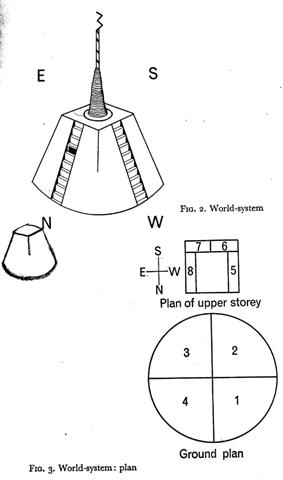 |
|
CLOSE
TO
THE
FULL
MOON: |
|
Equinox
Hasta-13
(Hand)
/
Chariot-28
(Worm)
GIENAH
(Wing)
=
γ
Corvi
(185.1),
ε
Muscae
(185.2),
ζ
Crucis
(185.4),
ZANIAH
(Corner)
= η
Virginis
(185.9)
*144.0
=
*185.4
-
*41.4 |
Sept
23
(266)
CHANG
SHA
(Long
Sand-bank)
= ζ
Corvi
(186.3)
45 +
180
=
225
=
266
- 41 |
24
INTROMETIDA
(Inserted)
=
ε
Crucis
(187.4),
ACRUX
=
α
Crucis
(187.5)
*146.0
=
*187.4
-
*41.4 |
25
γ
Com.
Berenicis
(188.0),
σ
Centauri
(188.1),
ALGORAB
=
δ
Corvi
(188.5),
GACRUX
=
γ
|
|
CLOSE
TO
THE
SUN: |
|
March
23
|
24
(266
-
183
=
83) |
25
(Julian
equinox) |
26 |
|
χ
Pegasi
(2.1),
θ
Andromedae
(2.7) |
σ
Andromedae
(3.0),
ι
Ceti
(3.3),
ζ
Tucanae
(3.5),
ρ
Andromedae,
π
Tucanae
(3.7) |
no
star
listed
(4) |
ANKAA
= α
Phoenicis,
κ
Phoenicis
(5.0)
ALPHARD
(α
Hydrae) |
We can
compare with
the Hawaiian
Moon
calendar:
| Rob |
Fruit |
Back |
| Mohalu |
Hua |
Akua |
| Maharu |
Ohua |
Otua |
| W |
Z |
H |
| Egyptian tusk |
 |
Phoenician shin |
 |
Greek sigma |
Σ (σ, ς) |
|
Wikipedia: Shin (also spelled Šin (šīn) or Sheen) literally means 'teeth, 'press', and 'sharp' ...
The symbol Σ is currently used as an expression for 'sum'. The Phoenician shin is oriented in another way, similar to how Cassiopeia is read in the night when in a low position - as Celestial W when below the pole, in contrast to the Celestial M when above it.
Greek sigma therefore resembles Cassiopeia in between, when she was in the west at the time when the Sun was rising in the east.
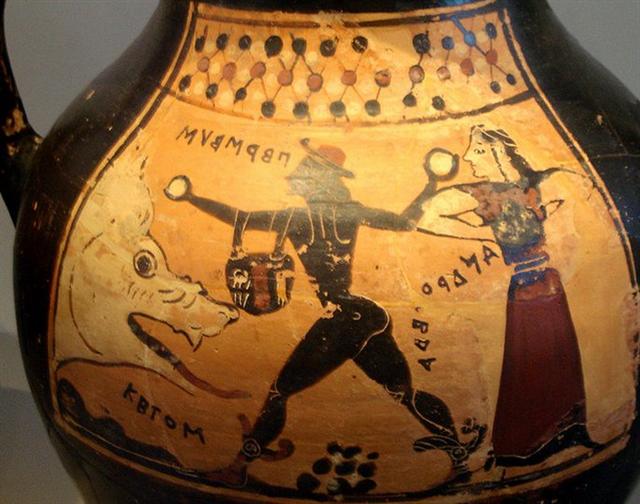
|
| Manacle |
ziqq |
Phoenician zayin |
 |
Greek zeta |
Ζ (ζ) |
|
... Zeta (uppercase Ζ, lowercase ζ; Greek: ζήτα ... is the sixth letter of the Greek alphabet. In the system of Greek numerals, it has a value of 7. It was derived from the Phoenician letter Zayin. Letters that arose from zeta include the Roman Z and Cyrillic З ...
Zayin (also spelled Zain or Zayn or simply Zay) is the seventh letter of many Semitic abjads ... It represents the sound [z]. The Phoenician letter appears to be named after a sword or other weapon. (In Biblical Hebrew, 'Zayin' means sword, and the verb 'Lezayen' means to arm. In modern Hebrew, 'zayin' means penis and 'lezayen' is a vulgar term which generally means to perform sexual intercourse and is used in a similar fashion to the English word fuck, although the older meaning survives in 'maavak mezuyan' (armed struggle) and 'beton mezuyan' (armed, i.e., reinforced concrete). The Proto-Sinaitic glyph according to Brian Colless may have been called ziqq, based on a hieroglyph depicting a 'manacle'.


|
...
Ravens,
unlike
geese,
loons
and
many
other
birds,
do
not
in
fact
have
penises
- a
fact
recorded
and
accounted
for
in
several
ways
in
Northwest
Coast
mythology
...
Live
holothurians,
when
handled,
have
the
disconcerting
habit
of
transforming
themselves
suddenly
from
soft
to
hard
or
limp
to
stiff
and
back
again.
If
handled
enough,
they
will
also
ejaculate,
disgorging
their
own
viscera
in
apparent
self-defence.
This
behavior
is
efficiently
explained
in a
story
Arthur
Lewis
told
in
Tsimshian
to
Gwüsk'aayn
in
the
1930s.
The
first
holothurian,
Lewis
says,
was
the
cast-off
penis
of
the
Raven
...
...
Sea
cucumbers
have
also
inspired
thousands
of
haiku
in
Japan,
where
they
are
called
namako
(ナマコ),
written
with
characters
that
can
be
translated
'sea
mice'.
In
English
translations
of
these
haiku,
they
are
usually
called
'sea
slugs';
according
to
the
Oxford
English
Dictionary,
the
term
'sea
slug'
originally
referred
to
holothurians
(in
the
18th
century),
though
biologists
now
use
the
name
only
for
the
nudibranch
molluscs,
marine
relatives
of
land
slugs.
Almost
1,000
Japanese
holothurian
haiku
translated
into
English
appear
in
the
book
Rise,
Ye
Sea
Slugs!
by
Robin
D.
Gill
...

|

















